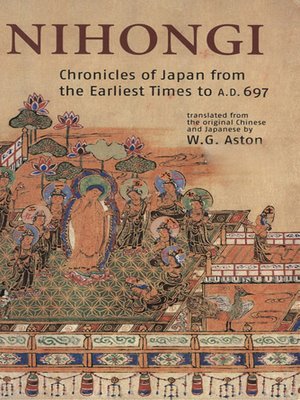
Sign up to save your library
With an OverDrive account, you can save your favorite libraries for at-a-glance information about availability. Find out more about OverDrive accounts.
Find this title in Libby, the library reading app by OverDrive.



Search for a digital library with this title
Title found at these libraries:
| Library Name | Distance |
|---|---|
| Loading... |
Nihongi: Chronicles of Japan from the Earliest Times to A.D. 697, often called the Nihonshoki, is one of Japan's great classics of literature. Regarded as one of the seminal original authorities on the mythology and ancient history of Japan, it remains as fresh today as when it was written in the eighth century. It provides a vivid picture of a nation in formation.
In the Nihongi, we see the growth of national awareness following the assimilation of Buddhism and the general Chinese and Indian influence on Japanese culture. Before its history stretch the mysterious archaeological ages of Jomon and Yayoi. From the first chapter, “The Age of the Gods," the fantastic world of ancient Japan is laid before us. Ritual myth and superstition meet with bare feet and folk custom. Strong emotions and conflict are seen surging in Japan's antiquity. Few historical documents are as “human" as the Nihongi. For a thousand years, emperors, scholars, courtiers, and imperial historians have found in the Nihongi knowledge and guidance. It remains a key to early Japan, a gateway to the actual old Japan.
The translator of the Nihongi, William George Aston, pioneered the translation of Japanese into English.
In the Nihongi, we see the growth of national awareness following the assimilation of Buddhism and the general Chinese and Indian influence on Japanese culture. Before its history stretch the mysterious archaeological ages of Jomon and Yayoi. From the first chapter, “The Age of the Gods," the fantastic world of ancient Japan is laid before us. Ritual myth and superstition meet with bare feet and folk custom. Strong emotions and conflict are seen surging in Japan's antiquity. Few historical documents are as “human" as the Nihongi. For a thousand years, emperors, scholars, courtiers, and imperial historians have found in the Nihongi knowledge and guidance. It remains a key to early Japan, a gateway to the actual old Japan.
The translator of the Nihongi, William George Aston, pioneered the translation of Japanese into English.







